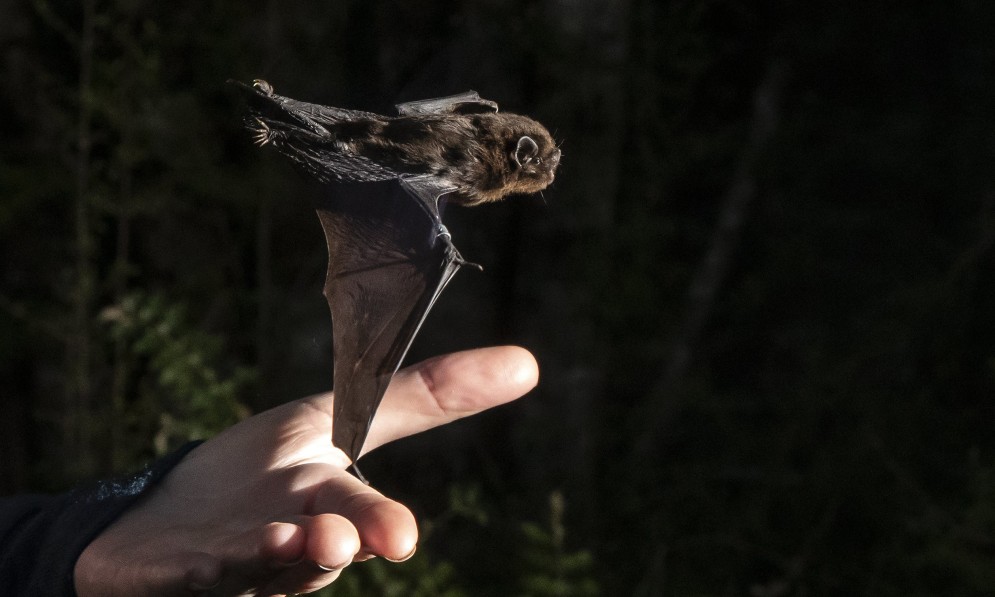A colony of pekapeka has been discovered in the Rai Valley, Marlborough, bringing hope for this rarely seen species. By Lynn Freeman
Forest & Bird magazine
A version of this story was first published in the Autumn 2023 issue of Forest & Bird magazine.
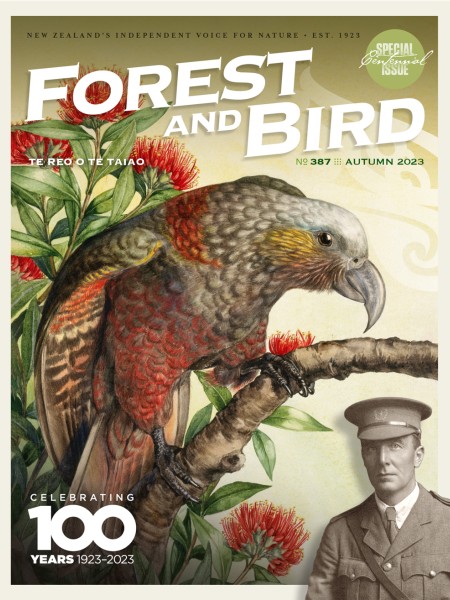
Over the past five summers, Forest & Bird’s Te Hoiere Bat Recovery team has been carrying out monitoring at Pelorus Bridge Scenic Reserve, Marlborough, leading to several exciting discoveries of roost trees.
In January, our field team decided to search for pekepaka maternity roosts, where mothers collectively care for their young, in neighbouring Rai Valley reserves.
Lo and behold, a significant number of roosts were discovered in Ronga Recreation Reserve, with some also found in both the Carluke Reserve and Brown River Reserve areas.
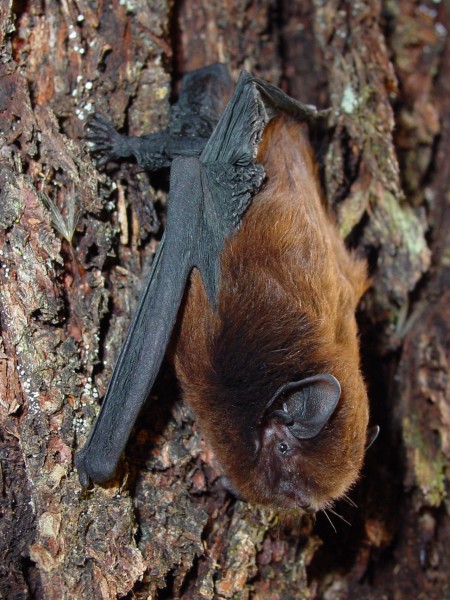
Pekapeka long-tailed bat (female). Image Colin Donnell
Forest & Bird’s national conservation projects manager Mandy Noffke is thrilled about this significant discovery.
“All indications are that we have two social groups in Te Hoiere Catchment – one in Pelorus and another that frequents the Rai Valley area,” she said.
“Many more years of data are going to be needed to have a better understanding of the population dynamics, but the fact there are multiple thriving colonies is incredibly exciting.”
Pekapeka have long been in decline all over Aotearoa because their habitats are threatened by land use changes, loss of habitat, fragmentation, weeds, and
predators.
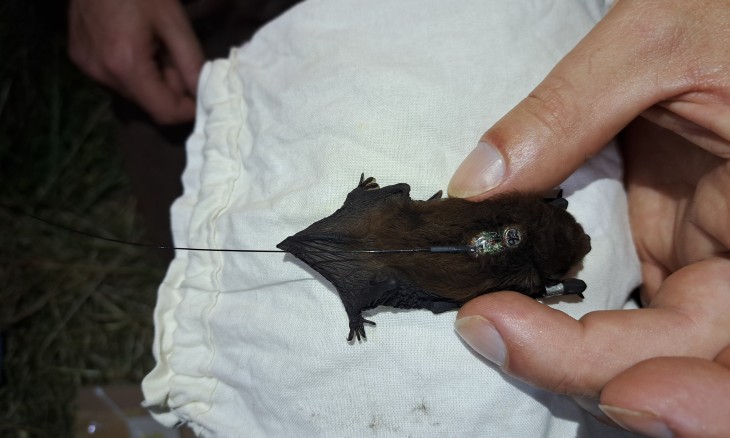
Bats were fitted with transmitters so they could be tracked. Image supplied
The 18ha Ronga Reserve is a little known enclave of native bush north of Pelorus Bridge. It’s one of the last remaining podocarp lowland forest remnants to have survived logging and farming.
Led by Michael North, volunteers from the Nelson Tasman Weedbusters and Forest & Bird’s Nelson-Tasman and Marlborough Branches have been carrying out restoration plantings and weed control there.
The large mature mataī and rimu trees provide ideal roosting habitats, as the monitoring team found out when they went there at night in search of the notoriously difficult-to-find roosts.
At the time of going to print, there were eight confirmed maternity roosts in Ronga, five in Carluke, and two in Brown River.

Jen Waite (left) and Grant Maslowski take body measurements and sex the bats. Image Connor Wallace
The team also found evidence of bats frequenting the Opouri Valley, 5km from Ronga and high in the Mt Richmond Forest Park.
Unfortunately, this story of hope comes with a significant “but”. One of the roosts filmed using thermal imaging detected two rats on a tree watching as the bats were emerging.
Despite their best efforts to catch and kill their prey, this time the rats failed.
Plans are afoot to roll out more predator control to protect these newly discovered roosts, which are located on public conservation land.
History highlight
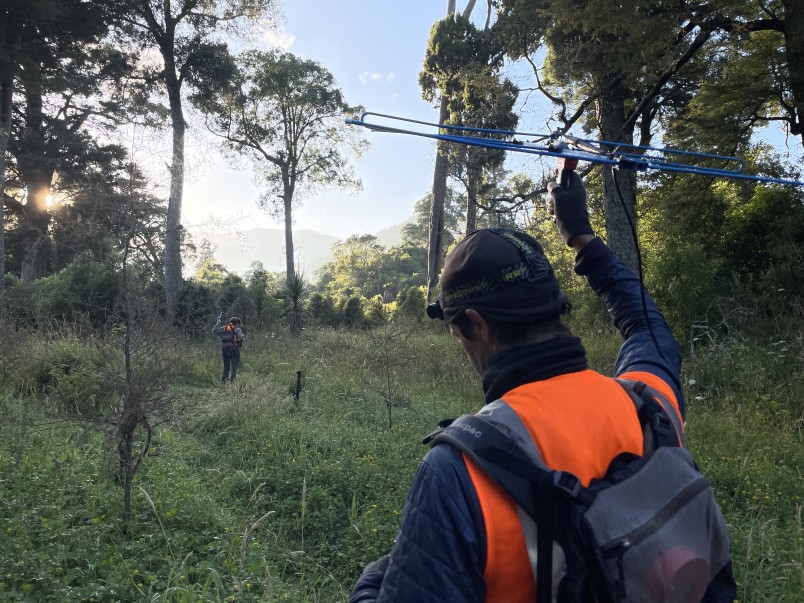
Monitoring for long-tailed bats. Image Connor Wallace
Forest & Bird’s Te Hoiere Bat Recovery Project has been working for nearly two decades to protect the precious remnant long-tailed bat population at Pelorus Bridge, in Marlborough.

Forest & Bird's former Top of the South regional manager, Debs Martin
The Society’s former Top of the South regional manager Debs Martin first stumbled across the bats when she was camping at the Department of Conservation’s picturesque Pelorus Bridge Scenic Reserve campground.
Then, in 2005, local Forest & Bird branches started looking for bat populations in the area. Forest & Bird commissioned a bat survey of the top of the South Island to pinpoint the best location for a restoration project. It discovered only three populations of pekapeka, including the one at Pelorus, which was the most viable. In 2008, the Society launched its first conservation project focused solely on bat recovery.
Since then, local volunteers, including members from our Nelson-Tasman and Marlborough Branches, have managed a dedicated trapping network at Pelorus to protect and restore bat habitat and breeding sites.
Forest & Bird would like to thank the many generous individuals and organisations helping support our bat restoration work at Pelorus, including Marlborough District
Council, Jobs for Nature, Lottery Environment and Heritage Committee, Evergreen
Trust, and Transpower. We also acknowledge Te Hoiere Project, Kotahitanga mō te Taiao Alliance, and Ngāti Kuia for their continuing support for pekapeka protection in Te Tauihu.

